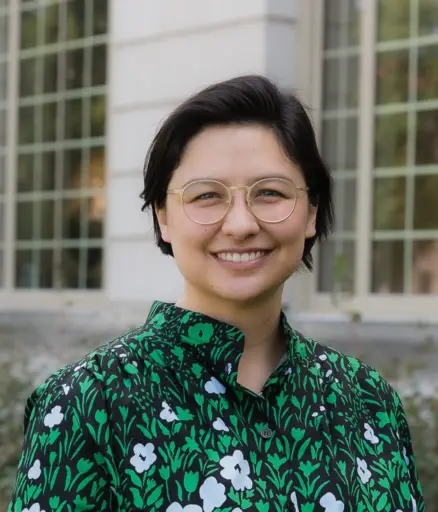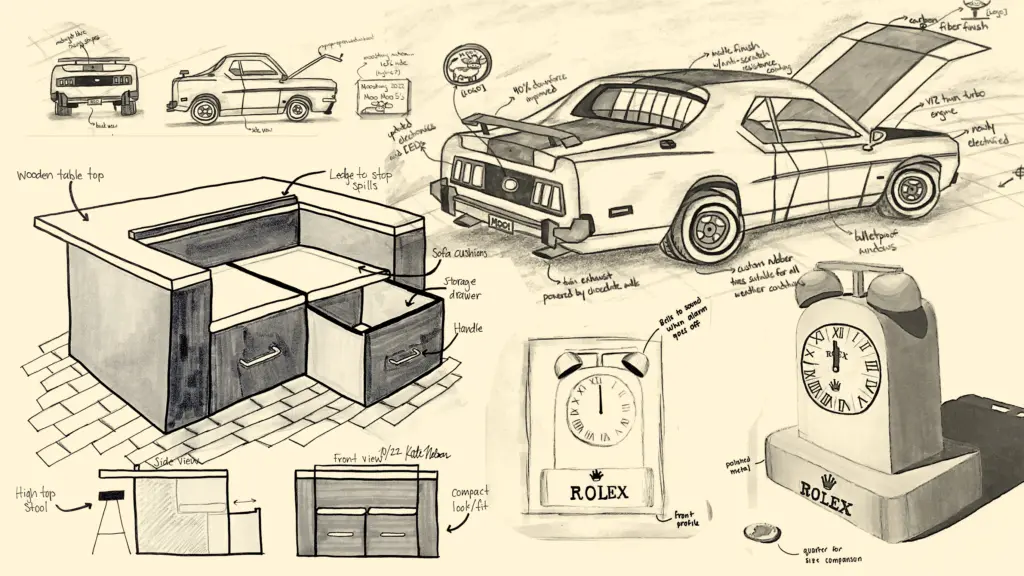When Kate Fu revamped ME 231: Geometric Modeling for Design and Manufacturing, she knew the new hands-on drawing exercises would take many students out of their comfort zones.
After all, the students are training to be engineers, not artists.
“A lot of people think about drawing as a fine art skill, but I really emphasize to the students that this is not a fine arts class and they’re not going to be graded on their fine arts abilities,” says Fu, the Jay and Cynthia Ihlenfeld Associate Professor of Mechanical Engineering. “It’s about visual communication. Being able to quickly sketch something on paper to explain what you’re thinking and how it might work is a very powerful communication tool for an engineer.”
 Kate Fu
Kate Fu
It’s such an important tool that the students spend the first five weeks of the course learning and practicing techniques to draw geometries in 2D perspective before they advance to using computer-aided design (CAD) software later in the course.
“One of the most important reasons perspective sketching has been integrated into the course and taught before the students learn CAD is to emphasize the importance of working out early-stage ideas on paper, before moving to a detail design tool like CAD,” she says. “A lot of time can be wasted trying to work out early designs in CAD, since it requires so much more time, detail and specifications to create a design. With sketching, engineers can quickly iterate, modify and start over until they reach a design they are happy to move forward with.”
Fu creates a supportive learning environment and works to assuage anxieties students may feel about the drawing assignments.
“I tell them that I’ve taught a version of this course for years at another institution, and to trust me that it’s going to be fine,” she says. “I want to see that they’re trying to use the techniques I’m teaching, listening to instructions, and growing over time, and I think a lot of students came out of the course feeling really proud of their skill development.”
Fu revamped ME 231 based on a course she developed in her former faculty role at the Georgia Institute of Technology with colleagues Julie Linsey and Denis Dorozhkin. She began teaching the new version of ME 231 at UW-Madison in fall 2022.
 A collage of drawings by students Kate Nelson (sofa bar), Gavin Chang (car) and Madison Noe (alarm clock) for ME 231. Submitted images.
A collage of drawings by students Kate Nelson (sofa bar), Gavin Chang (car) and Madison Noe (alarm clock) for ME 231. Submitted images.
In the course, undergraduate students learn how to use the computer-aided design software SOLIDWORKS to model and create visualizations of parts for engineering purposes. Students learn the software from watching recorded video lessons outside of class, then they spend time in their lab sections doing hands-on practice with SOLIDWORKS.
Fu uses her lectures to discuss the reasons why the students are learning this material, connecting the lessons to the broader context of their engineering major and the practice of engineering. That includes helping students understand the connections between what they design and model and the capabilities and limitations of various manufacturing processes.
In updating the course, Fu’s goals included expanding hands-on learning and incorporating more opportunities for creativity and open-ended design.
“I want the students to really have fun in this class,” Fu says. “For many students, this will be one of their first engineering courses, so I think it’s important to set the stage to give them a good experience in engineering. A lot of attrition in terms of women leaving the major and leaving STEM happens in that first year of college, so I feel I have a great opportunity to make an impact by helping women, as well as students from all identities, to feel welcome, safe, included and valued in the major.”
In place of quizzes and tests, students now work on a team modeling project. Working in four- or five-person teams, each student models at least three parts, and then all the parts need to be assembled together. Each team creates drawings, animations and renderings to showcase its designs.
Fu gives the students a lot of freedom to choose what they want to model. They can invent something new, improve on an existing product, or model something from fantasy or a concept design. It’s an opportunity for the students to be creative and work on something that excites them. For example, students could model a lightsaber from Star Wars. Or a team of students passionate about aerospace could model a spacecraft and use the project to showcase themselves to employers as prospective interns or future full-time employees.
“This team project helps them develop skills that are highly relevant to working in industry,” Fu says. “One of the hardest parts about modeling is figuring out how to communicate what you’re designing to other people so that it fits in with what they’re designing, so this is a great hands-on opportunity to learn those skills.”
Fu is also committed to helping the students work effectively in teams. She leveraged her named professorship to purchase a software license for CATME, a validated survey tool developed by researchers at Purdue University that helps build better teams. The tool allows her to ask students a variety of questions—such as about their different social identities, their skill level with SOLIDWORKS, their leadership style, and their scheduling availability for team meetings. CATME then uses an optimization algorithm to create groups based on specified parameters, which enables Fu to create inclusive teams with balanced skill levels, supporting the success of all students.
Fu cares deeply about diversity, equity and inclusion in engineering, and she’s excited to include lectures on socially engaged design in the course. “I want the students to remember that how our work impacts real people in society is ultimately the most important part of our jobs, so I love the opportunity to teach about these issues from the perspective of diversity, equity, inclusion and justice in design.”
Featured image caption: Undergraduate students Kate Nelson (left) and Madison Noe (right) practice drawing techniques with Kate Fu (center), the Jay and Cynthia Ihlenfeld Associate Professor of Mechanical Engineering. Credit: Joel Hallberg.
Professor Kate Fu, Mechanical Engineering, University of Wisconsin-Madison